'It almost feels like home': How these gamers found their tribe in Singapore’s arcades
If you were one of those who spent their childhood in arcades, you might remember the excitement of sliding into the driver’s seat of Daytona, where, for a brief moment, you experienced the thrill of driving long before you were old enough for the real thing. Or you might also remember the joy of watching tickets spill from machines, and the rush to redeem a long-awaited prize – most likely a toy or a plushie.
As gaming technology has advanced, gamers now have way more options, including consoles and mobile games at home. But the arcade – with its frantic environment of flashing lights and loud, rhythmic beats – continues to remain relevant to many today. It might be a place of nostalgia for the slightly older generation, but young people today continue to keep arcade culture alive.
RISE, FALL AND RISE OF SINGAPORE'S ARCADES
Did you know that arcades were once banned in Singapore? In 1983, the Ministry of Culture imposed a nationwide ban on video game arcades due to concerns about students skipping school to play games. Parents were also worried about the negative influence of arcade gaming and the potential for addiction.
However, by the 1990s, the ban was lifted and instead, the government introduced new censorship guidelines for video games. Arcades made a strong comeback, marking what many consider the golden era of gaming in Singapore. They could be found all over the island, with popular names such as Wywy WonderSpace and E-Zone. Though these establishments have since shut down, Timezone, an Australian entertainment brand that entered the Singapore market in 1993, continues to thrive today.
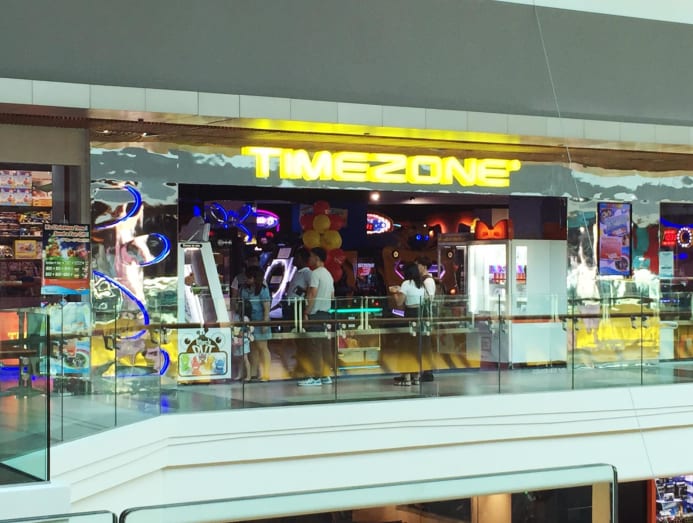
For arcade-goer and avid rhythm game player Amos Lim, 20, the arcade experience is deeply nostalgic.
"My first time at the arcade was a long time ago. I visited the Parkway Parade (Timezone) outlet when it was still located in the basement,” he recalled. “I played the basketball game the most, and I really enjoyed the healthy competition it brought. It was special to me because trips to the arcade with my friends were a rare treat.”
Like Lim, many Singaporeans fondly remember playing classic arcade games, from shooting basketballs to racing cars and dance simulation games. However, as mobile and home video games gained popularity in the late 1990s and early 2000s, some players opted for the convenience of home. Despite this, others continued to frequent arcades, drawn by the sense of community and social interaction that home gaming simply couldn’t replicate –especially for rhythm game enthusiasts.

THE RHYTHM GAME COMMUNITY
For rhythm game players, building a community happens more organically than with other arcade games. Two of the most popular rhythm games today are Maimai and Pump It Up. In Maimai, players must hit circles in sync with the visuals and music, earning higher scores when perfectly synchronised with a partner.
In Pump It Up, players step on arrows as they reach the top of the screen. While both games allow for solo or team play, having another player either increases the chance of achieving a higher score or pushes them to challenge themselves further.
Lim has been playing Pump It Up for about three years. Through the game, he met Ronald Santoso and Hor Zheng Jie. What started as casual encounters at the arcade turned into a regular routine of playing together, eventually building a friendship that extends beyond the game itself.
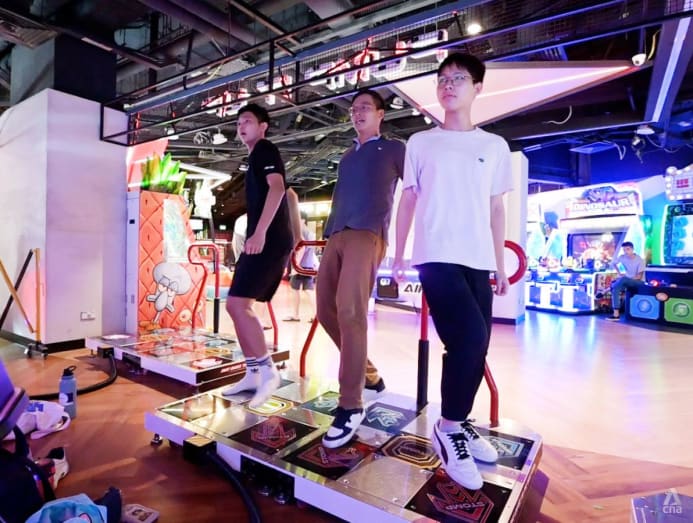
“The arcade community is quite small, given how computer games have largely replaced arcade culture,” shared 28-year-old Ronald Santoso. “I would imagine the biggest contributors to the arcade community are rhythm gamers because these games can’t be fully replaced by home gaming. In games like Pump It Up, playing cooperative levels allows players to bond. We also support each other by sharing tips and pushing one another to improve.”
He added: “It’s very natural to get to know people because there are limited machines – definitely fewer than the number of players wanting to play. Often, players start conversations while queuing for the game. It might not happen the first time you visit the arcade, but if regulars see you coming back frequently, chances are they’ll want to get to know you. The rhythm gaming community in Singapore is usually formed this way.”
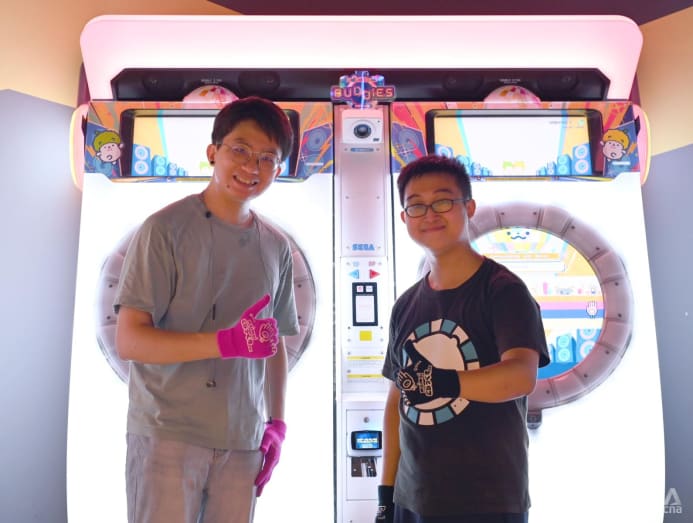
Another arcade community we spoke to includes Maimai players Daniel Ling and Tang Wai Jing. Although they attended the same polytechnic, it was their shared love for Maimai that brought them together.
“It’s always comforting to see a familiar face when you walk into the arcade,” said Tang Wai Jing. “In a way, it feels like a second home.”
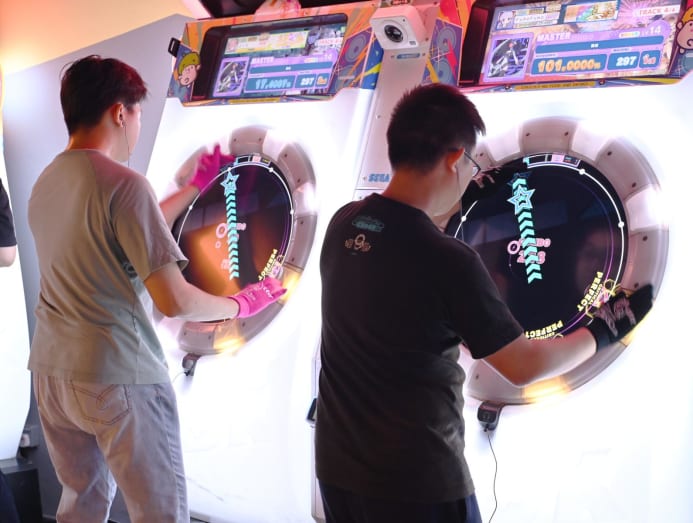
MORE THAN JUST COMPETITION
Although high scores are a major motivation, the competition among rhythm gamers tends to be friendly and encouraging rather than toxic.
“Surprisingly, competition among Pump It Up players at the arcade isn't very intense,” Amos Lim shared. “Most players focus on improving their skills rather than trying to ‘beat’ others. Instead of stressing about competition, we challenge ourselves to become better versions of ourselves.”
Beyond the arcade, these gaming communities have led to lasting friendships.
“Yes, I’ve made some lifelong friendships at the arcade. One person I’ve known for 14 years has become a really close friend. We spent countless hours playing Pump It Up, cheering each other on, and sharing tips to get better,” said 25-year-old Hor Zheng Jie, an avid Pump It Up player.
“Our bond has grown beyond gaming – we celebrate milestones together, hang out outside of the arcade, and support each other in life. Connections like these are truly special.”
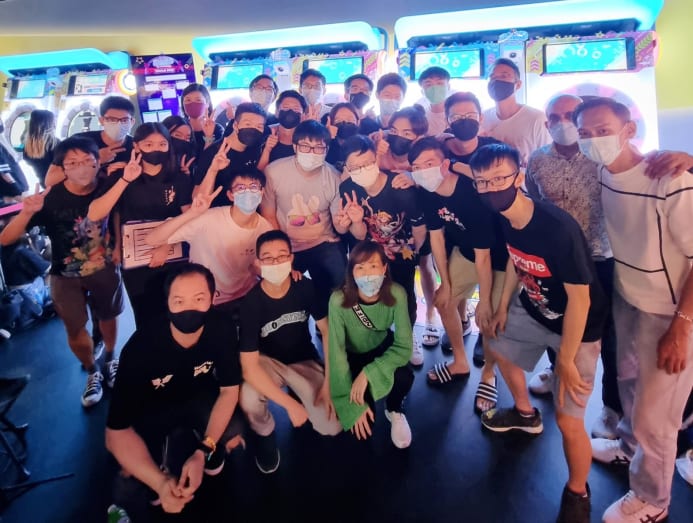
ARCADES AS A SOCIAL HUB
With ever-changing and rapidly evolving technology in gaming, arcades have introduced more advanced and interactive experiences. Timezone, for example, has integrated VR and interactive games to create immersive experiences for its guests.
And one of the most significant changes observed by both players and arcade staff is how arcades have become even more of a social hub.
“While we initially attracted younger players, we now see a broader age range, from families and young children to adults and even seniors enjoying our venues,” shared Jacquline Ong, the head of marketing for Timezone Singapore. “Our vision has always been to spread happiness and create memorable moments, and we bring this to life through the design of our environment, ensuring there’s something for everyone – from the young to the old.”
Lim has also noticed a shift in how people perceive arcade-goers.
“Back then, arcades were often frowned upon as places for ‘childish’ people. Nowadays, I believe arcades have evolved into social gathering spaces that strengthen bonds between friends and families. They cater to both adults and children, providing a fun outlet that adds purpose to arcades, especially in Singapore, where everyone leads hectic lifestyles.”
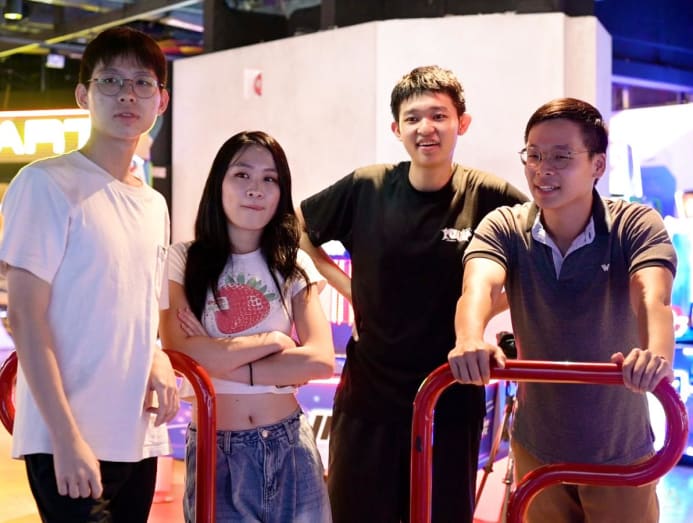
For many, the arcade is more than just a gaming venue – it’s a place where one can belong.
“Considering how much of my childhood I spent in arcades, it almost feels like home,” Santoso reflected. “The noise, the crowd, the lights – while it might be a turn-off to some, it just feels right every time. It’s a safe place for me, and I wish more people in Singapore understood that the arcade isn’t just for kids. It can be home to a community united by a passion for arcade gaming.”
免责声明:投资有风险,本文并非投资建议,以上内容不应被视为任何金融产品的购买或出售要约、建议或邀请,作者或其他用户的任何相关讨论、评论或帖子也不应被视为此类内容。本文仅供一般参考,不考虑您的个人投资目标、财务状况或需求。TTM对信息的准确性和完整性不承担任何责任或保证,投资者应自行研究并在投资前寻求专业建议。
热议股票
- 1
- 2
- 3
- 4
- 5
- 6
- 7
- 8
- 9
- 10